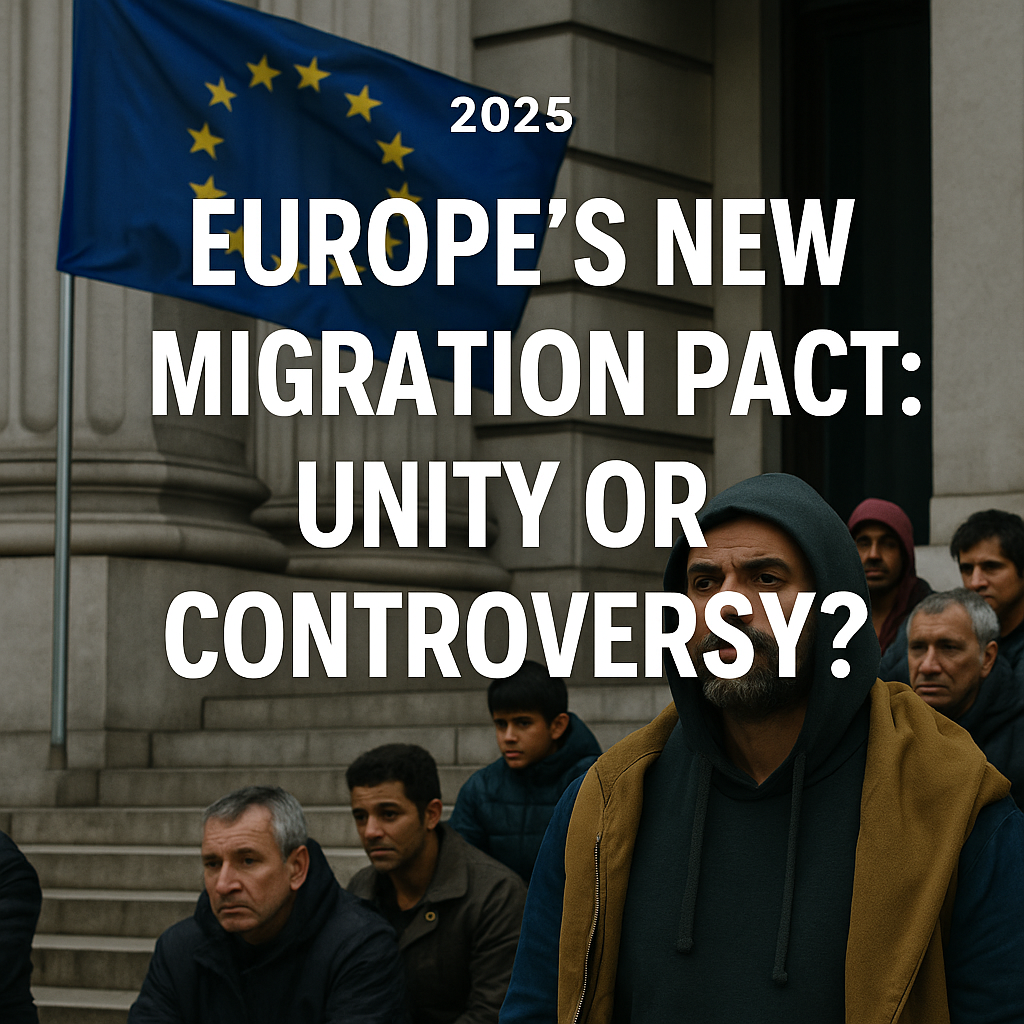
In a bold and controversial move, the European Union has officially adopted the Migration and Asylum Pact of 2025 — a framework meant to overhaul how the EU handles asylum seekers, border security, and burden-sharing among member states. While hailed by some as a breakthrough toward unity, others argue it raises serious ethical, logistical, and political concerns.
What is the Migration Pact?
The new pact aims to create a streamlined, efficient, and fair system to manage immigration across the EU’s 27 countries. It proposes faster processing of asylum applications, stronger border control through Frontex (EU Border Agency), and a mandatory solidarity mechanism — where member states either accept asylum seekers or contribute financially to relocation efforts elsewhere.
In simple terms, it means:
-
Faster decisions (within 12 weeks)
-
Shared responsibilities
-
Digital monitoring at external borders
The pact replaces the outdated Dublin Regulation, which disproportionately burdened countries like Italy, Greece, and Spain.
Unity in Policy – A Long-Time Coming
This agreement has been years in the making. Since the 2015 migrant crisis, the EU has struggled to unify its approach. Countries in Eastern Europe resisted mandatory relocation, while border countries demanded fairer support.
Now, under the 2025 pact, countries like Hungary and Poland can opt-out of relocation — by paying a compensation fee per migrant — but must still contribute. France and Germany, meanwhile, have welcomed the deal as a sign that Europe can act collectively during humanitarian crises.
European Commission President Ursula von der Leyen called it “a historic moment for European solidarity.”
The Controversy
Despite the celebratory tone in Brussels, the pact has ignited criticism across humanitarian circles. Critics argue that:
-
Financial opt-outs may encourage wealthier nations to avoid moral responsibility.
-
The detention-like border procedures could lead to human rights violations.
-
The system prioritizes speed over fairness, risking improper deportations.
NGOs like Amnesty International and Doctors Without Borders have expressed concern over the potential for pushbacks and inadequate legal review.
Even within member states, public opinion is sharply divided. In Germany and Sweden, citizens support the pact’s fairness. In contrast, leaders in Slovakia and Italy face domestic pressure for being too lenient or too harsh.
The Human Face of Policy
At the center of all this are real human lives. Families fleeing war, economic hardship, and persecution may now face faster decisions, but also tighter surveillance and greater uncertainty.
Ahmed, a Syrian refugee who arrived in Athens in 2024, told reporters:
“If this new system helps people like me find safety faster, I support it. But if it turns away others like me — it’s not progress.”
What Happens Next?
The pact will come into full effect by December 2025, giving member states time to set up the required technology, border checkpoints, and support systems. Over €4 billion has been earmarked for implementation.
Experts predict that the pact’s success or failure will shape how Europe responds to climate migration, conflict displacement, and economic migration for decades.
Conclusion
The European Union’s Migration Pact of 2025 is a landmark reform, but its execution will determine its legacy. Will it unify the continent around shared responsibility, or will it expose deeper divisions?
For now, Europe stands at a crossroads — between compassion and control.
📌 Keywords:
EU migration pact 2025, European Union asylum policy, refugee crisis, Frontex border control, international news, migrant relocation, ListFisher
🖼️ Featured Image Caption:
Migrants wait outside the EU Parliament as the new migration policy is announced – Photo by ListFisher AI News Studio
Would you like the next 4 international blogposts as well? Topics can include:
-
US-China AI regulation talks
-
UN climate crisis summit updates
-
African tech boom 2025
-
Brazil’s digital currency launch
Let me know your preference!


